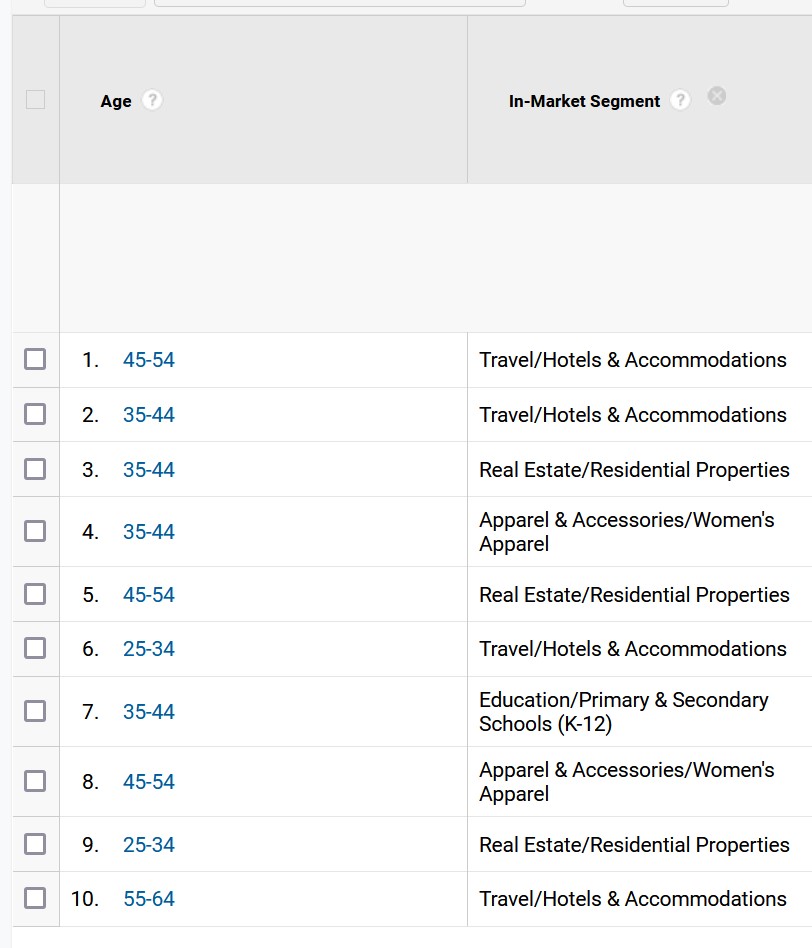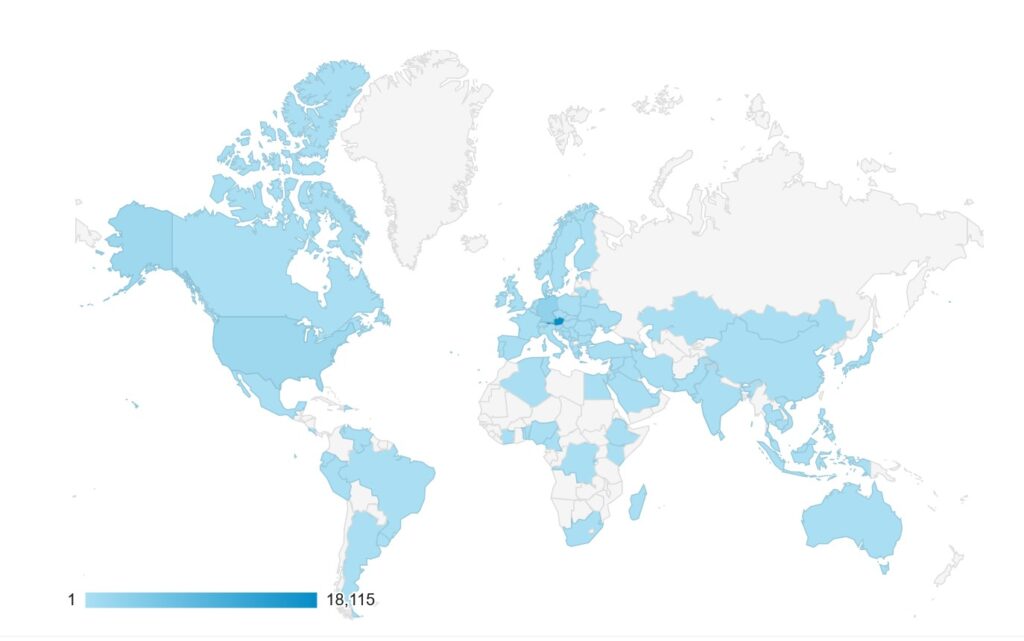When it comes to data analysis, one of the most important things to consider is your target audience. A persona is one way to help you better understand your target audience and what they want or need from your product or service. It is a semi-fictional character that represents a specific segment of your target audience.
When creating a persona, you’ll want to consider things like:
· Demographics: age, gender, location, income, education, etc.
· Psychographics: values, attitudes, interests, lifestyle, etc.
· Behaviors: how they use your product or service, what their goals are, what their pain points are, etc.
By creating a persona, you’ll be able to better understand your target audience and what they want or need from your product or service. This will help you create more targeted and effective marketing campaigns.
Typically, personas are constructed by researching and interviewing real people to gain qualitative data, and this information often shapes how a design team develops a product and how a marketing team builds their messaging around it.
We’re going to show you a way to build personas through quantitative data – the kind you can discover in your Google Analytics package.
How can you gather data to create personas?
It is important to identify the key patterns driving conversions in your business. This will allow you to discover your core audience. For example, it is possible that 90% of your website sales come from one type of customer. This could be a young woman living in the city center, who is between 25 and 35 years old. This information could be a valuable and actionable insight for your company, as you will know who you are targeting.
How to choose the right data collection method?
There are two main ways to collect data: qualitative and quantitative.
Qualitative research
This type of research can help you understand the motivations, thoughts, and underlying causes behind customer behavior. Qualitative research may take the form of:
- Discussions in focus groups
- Interviews with individuals
- Observations (the “think aloud” protocol used in Remote UX Testing)
They all provide real-world, actionable insights without the need to be a data scientist. The drawbacks of qualitative research for patterns discovery are that it is difficult to generate statistical analysis and can be time-consuming as well as costly.
Quantitative research
Any type of investigation in which the results can be presented numerically is called quantitative research. Quantitative research is about determining how many, how often, etc,
There are many types of quantitative research:
- Online surveys
- Surveys on paper
- Mobile surveys
- Telefone interviews
- Online polls
- Studies of longitudinal relationships
- Anything that can produce data.
Quantitive data has a few drawbacks. It can only tell you what’s happening and how often, but not WHY. Quantitive data can only help you make decisions about how to improve your website or product.
Understanding your audience requires a holistic approach. You can cover all bases with a mix of qualitative and quantitative research. This can be done through persona research.
What information do you need in order to create a persona?
Google Analytics – or other Analytics tools like Matomo – offer a wide array of data to create a complete persona.
Gender and age
This is an example from one of our customers. You can see the breakdown of ages by clicking Audience>Demographics>Overview
As you can see, the biggest demographic is the ’25-34-year-old-person’. This is where you can begin creating your first persona. While you can focus on the most dominant group with the highest numbers, don’t forget to include other audiences. Personas will be needed for all high-performing demographics.

Click Age to add more information to your persona. Next, click the section titled’secondary dimension’ where you can search to find ‘Affinity. Click on the category to add the dimension.
Affinity
You can identify your ideal customers online with affinity categories. Google Analytics analyzes a variety of factors, such as browsing history and time on page. This information is then associated with a pre-made user profile. This one of the most interesting dimensions: it gives your persona a human touch. Google offers a wide range of affinities:
- Art & Theater Aficionados
- Auto Enthusiasts
- Auto Enthusiasts » Motorcycle Enthusiasts
- Auto Enthusiasts » Performance & Luxury Vehicle Enthusiasts
- Auto Enthusiasts » Truck & SUV Enthusiasts
- Avid Investors
- Beauty Mavens
- Business Professionals
- Business Travelers
- Comics & Animation Fans
- Cooking Enthusiasts
- Cooking Enthusiasts » 30 Minute Chefs
- Cooking Enthusiasts » Aspiring Chefs
- Do-It-Yourselfers
- Family-Focused
- Fashionistas
- Fast Food Cravers
- Foodies
- Gamers
- Gamers » Action Game Fans
- Gamers » Adventure & Strategy Game Fans
- Gamers » Casual & Social Gamers
- Gamers » Driving & Racing Game Fans
- Gamers » Hardcore Gamers
- Gamers » Roleplaying Game Fans
- Gamers » Shooter Game Fans
- Gamers » Sports Game Fans
- Green Living Enthusiasts
- Health & Fitness Buffs
- Home Decor Enthusiasts
- Light TV Viewers
- Mobile Enthusiasts
- Movie Lovers
- Movie Lovers » Action & Adventure Movie Fans
- Movie Lovers » Comedy Movie Fans
- Movie Lovers » Family Movie Fans
- Movie Lovers » Horror Movie Fans
- Movie Lovers » Romance & Drama Movie Fans
- Movie Lovers » Sci-Fi & Fantasy Movie Fans
- Movie Lovers » South Asian Film Fans
- Music Lovers
- Music Lovers » Blues Fans
- Music Lovers » Classical Music Enthusiasts
- Music Lovers » Country Music Fans
- Music Lovers » Electronica & Dance Music Fans
- Music Lovers » Folk & Traditional Music Enthusiasts
- Music Lovers » Indie & Alternative Rock Fans
- Music Lovers » Jazz Enthusiasts
- Music Lovers » Metalheads
- Music Lovers » Pop Music Fans
- Music Lovers » Rap & Hip Hop Fans
- Music Lovers » Rock Music Fans
- Music Lovers » Spanish-Language Music Fans
- Music Lovers » World Music Fans
- News Junkies & Avid Readers
- News Junkies & Avid Readers » Business & Economic News Junkies
- News Junkies & Avid Readers » Entertainment & Celebrity News Junkies
- News Junkies & Avid Readers » Local News Junkies
- News Junkies & Avid Readers » Men’s Media Fans
- News Junkies & Avid Readers » Women’s Media Fans
- News Junkies & Avid Readers » World News Junkies
- Nightlife Enthusiasts
- Outdoor Enthusiasts
- Pet Lovers
- Pet Lovers » Cat Lovers
- Pet Lovers » Dog Lovers
- Political Junkies
- Shoppers
- Shoppers » Bargain Hunters
- Shoppers » Luxury Shoppers
- Shoppers » Shopaholics
- Shoppers » Value Shoppers
- Shutterbugs
- Social Media Enthusiasts
- Sports Fans
- Sports Fans » American Football Fans
- Sports Fans » Australian Football Fans
- Sports Fans » Baseball Fans
- Sports Fans » Basketball Fans
- Sports Fans » Boating & Sailing Enthusiasts
- Sports Fans » Cricket Enthusiasts
- Sports Fans » Cycling Enthusiasts
- Sports Fans » Fight & Wrestling Fans
- Sports Fans » Golf Enthusiasts
- Sports Fans » Hockey Fans
- Sports Fans » Motor Sports Enthusiasts
- Sports Fans » Racquetball Enthusiasts
- Sports Fans » Rugby Enthusiasts
- Sports Fans » Running Enthusiasts
- Sports Fans » Skiing Enthusiasts
- Sports Fans » Soccer Fans
- Sports Fans » Swimming Enthusiasts
- Sports Fans » Tennis Enthusiasts
- Sports Fans » Water Sports Enthusiasts
- Sports Fans » Winter Sports Enthusiasts
- Technophiles
- Thrill Seekers
- Travel Buffs
- Travel Buffs » Beachbound Travelers
- Travel Buffs » Family Vacationers
- Travel Buffs » Luxury Travelers
- Travel Buffs » Snowbound Travelers
- TV Lovers
- TV Lovers » Documentary & Nonfiction TV Fans
- TV Lovers » Family Television Fans
- TV Lovers » Game, Reality & Talk Show Fans
- TV Lovers » Sci-Fi & Fantasy TV Fans
- TV Lovers » TV Comedy Fans
- TV Lovers » TV Drama Fans
Below, we have added the secondary dimension of affinity to the age demographic in order to show the main interests for our 25-34-year-old audience and sorted it according gender.

This allows us to gain more information about our audience so that we can give you a more detailed description of our persona.
In-Market
The ‘Secondary dimensions’ drop-down menu allows us to search for the ‘In-Market segment’. The In-market segment allows you to connect with customers who are actively searching for and comparing products and services on the Google Display Network (YouTube), paid search results via AdWords display ads via AdSense, etc). It can be seen as recent purchase intent. Available in-market audiences include:
- Apparel and Accessories
- Autos & Vehicles
- Baby & Children’s Products
- Beauty Products & Services
- Business Services
- Computers & Peripherals
- Consumer Electronics
- Consumer Software
- Dating Services
- Education
- Employment
- Financial Services
- Gifts & Occasions
- Home & Garden
- Real Estate
- Sports & Fitness
- Telecom
- Travel
Below are the products and services that our customer’s customers are most interested in.

Geo and Devices
You can filter by language or location to see from where your audience is coming from. To find this filter, click Audience>Geo>Language and Audience>Geo>Location.

We now need to determine which devices are being used to access our website by our audience. By clicking Audience>Mobile>Devices, you can see exactly which brand of mobile they’re using and even what service provider or operating system they prefer.

Your persona
Using all this information obtained from the Google Analytics reports as listed above is the baseline for your first persona (primary persona). We can call the persona Maggie: she’s 29 years old. She’s using a mobile device (iPhone) and is passionate about Food & Dining & Cooking. She’s been researching about travelling. While this might sound just overly generic, you can add details from other additional sources. If you track the conversions, you can find out what type of products a specific group is buying from your online shop.
Key takeaways
Quantitative data gives you a very good start for creating a primary persona. Use this as starting point to refine your persona over time and introduce several more personas ovr time. An interesting experiment is to create a persona without looking at the data first. This can serve as test if your assumptions are in line with your data.
Overall, creating a persona is a lot of work. We are happy to assist you with creating personas for your business. Get in touch with us and learn how to start working with personas.
Photo by Godisable Jacob from Pexels
Source: Userzoom
